Description
The instruction for medical use
of Nebilet® medicine
the Trade name
of Nebilet®
the International unlicensed
name Nebivolol Lekarstvennaya a form
of the Tablet of 5 mg
Structure
One tablet contains
active agent – a nebivolol a hydrochloride of 5.45 mg (it is equivalent nebivolol 5.00 mg),
excipients: polysorbate 80, gipromelloza of 2910 15 мПа×с, lactoses monohydrate, starch corn, sodium of a kroskarmelloz, cellulose microcrystalline, silicon dioxide colloidal anhydrous, magnesium stearate.
The description
of the Tablet of round shape, with a biconvex surface, almost white color, with crosswise risky on one party.
Pharmacotherapeutic group
Beta blockers selection. Nebivolol.
The ATX C07AB12 code
the Pharmacological
Pharmacokinetics Later properties of oral introduction happens fast absorption of both enantiomer of a nebivolol. Food does not influence absorption of a nebivolol, it can be accepted irrespective of meal or at meal time.
Nebivolol is exposed to a comprehensive metabolization, partially – with formation of active hydroxymetabolites. Metabolization of a nebivolol occurs by alicyclic and aromatic hydroxylation, N-dealkylations and a glyukuronirovaniye, besides, are formed glucuronides of hydroxymetabolites. Metabolization of a nebivolol by aromatic hydroxylation is subject to the genetic oxidizing polymorphism depending on CYP2D6. The bioavailability of orally entered nebivolol averages 12% at individuals with fast metabolism and is almost full at persons with slow metabolism. At achievement of a steady state (steady-state) and at an identical dose the maximum concentration in plasma of not changed nebivolol at individum with slow metabolism is about 23 times higher, than at persons with fast metabolism. In the analysis of the sum consisting of not changed substance and active metabolites, the difference of the maximum concentration in plasma is 1.3-1.4-fold. Proceeding from difference in metabolization degree, Nebilet’s dose should be established always depending on individual needs of the patient: lower doses can be required by persons with slow metabolism, thus.
At persons with fast metabolism of value of elimination half-life of enantiomer of a nebivolol average 10 hours. At individuals with slow metabolism these values in 3-5 times more. At persons with fast metabolism the concentration in plasma RSSS энантиомера is slightly higher, than that SRRR энантиомера. At individuals with slow metabolism this difference is more. At persons with fast metabolism of value of elimination half-life of hydroxymetabolites of both enantiomer average 24 hours, and at persons with slow metabolism these values are, approximately, twice more.
Steady level in plasma for a nebivolol at most of patients (the person with fast metabolism) is reached within 24 hours, for hydroxymetabolites – several days later.
At quantities of a nebivolol from 1 to 30 mg of concentration in plasma are proportional to a dose. The age has no impact on pharmacokinetics of a nebivolol.
In plasma both enantiomer are mainly connected with albumine. Linking with proteins of plasma for SRRR небиволола makes 98.1%, and for RSSS небиволола – 97.9%.
In a week after introduction of 38% of a dose it is removed through kidneys and 48% – with a stake. Removal of not changed nebivolol through kidneys makes less than 0.5% of a dose.
The pharmacodynamics
Nebivolol represents mix of two enantiomer: SRRR небиволола (or D-nebivolol) and RSSS небиволола (or L-nebivolol). It combines two pharmacological actions:
– is a competitive and selection blocker of b1-adrenoceptors: this effect charge SRRR энантиомера (D-enantiomera),
– has soft vazodilatiruyushchy properties as a result of the introduction in exchange with L-argininom/azota of oxide.
At one-time and repeated reception of a nebivolol the heart rate and blood pressure at rest decrease and at loading – both at patients with normal pressure, and at having arterial hypertension. Hypotensive action at long-term treatment remains.
In therapeutic doses the α-adrenergic antagonism does not arise.
During short-term and long-term treatment nebivololy at patients with arterial hypertension system vascular resistance decreases. Despite decrease in heart rate, reduction of warm emission at rest and at loading it is limited because of increase in stroke output. The clinical value of these hemodynamic distinctions in comparison with other blockers of b-adrenoceptors is found not completely out.
At patients with hypertensia nebivolol increases the reaction of vessels to acetylcholine mediated by nitrogen monoxide, at patients with endothelium dysfunction this reaction is reduced.
In placebo – controlled researches of mortality incidence in which 2128 patients aged ≥ 70 years (middle age 75.2 years) having stable chronic heart failure with decrease in the fraction of emission of a left ventricle (FELV) or without that (an average value of FVLZh 36 ± 12.3% with the following distribution participated: FVLZh less than 35% at 56% of patients, % FVLZh 35%-45 at 25% of patients, is higher than 45% of FVLZh at 19% of patients) which lasted for, on average, 20 months, nebivolol as addition to standard therapy significantly extended time before death or hospitalization which are the result of cardiovascular pathology (final point of primary efficiency): Reduction of relative risk was 14% (absolute reduction: 4.2%). This reduction of risk was shown in 6 months of treatment and remained to such throughout all its term (average duration: 18 months). Action of a nebivolol did not depend on age, sex or an indicator of ejection fraction of a left ventricle at participants of a research. The advantage of a nebivolol concerning prevention of approach of death from any reasons in comparison with placebo was statistically insignificant (absolute reduction: 2.3%).
At the patients accepting nebivolol the decrease in frequency of cases of sudden death is established (4.1% in comparison with 6.6%, relative decrease by 38%).
The researches in-vitro and in-Vivo on animals showed what nebivolol has no own sympathomimetic activity.
Experiments of in-vitro and in-vivo on animals showed what nebivolol in pharmacological doses has no stabilizing effect on membranes.
At healthy probands nebivolol has no significant effect on shipping of the maximum physical activity or on endurance.
Indications
– essential hypertensia
– treatment of stable chronic heart failure of light and average severity as addition to standard methods of treatment at elderly patients ≥ 70 years.
A route of administration and doses
Essential hypertensia
Adults
the Dose makes 1 tablet (5 mg of a nebivolol) a day, it is always desirable to accept it at the same time day. The drug can be taken at meal time.
The hypotensive effect is shown in 1-2 weeks of treatment. Sometimes optimal effect is reached only 4 weeks later.
A combination with other antihypertensives
the Blockers of b-adrenoceptors can be applied both to monotherapy, and in a combination with other antihypertensives. Still additional hypotensive effect was observed only at Nebilet’s combination of 5 mg from 12.5-25 mg of Hydrochlorthiazidum.
Patients with a renal failure
For the patients having a renal failure, the recommended initial dose makes 2.5 mg a day. If necessary it is possible to increase a daily dose to 5 mg.
Patients with a liver failure
concerning use of drug for patients with a liver failure or an abnormal liver function there is only a limited amount of data. For this reason Nebilet’s use for such patients is contraindicated.
Elderly patients
For patients are more senior than 65 years the recommended initial dose makes 2.5 mg a day. If necessary it is possible to increase a daily dose to 5 mg. However, considering insufficient experience of use of drug for patients 75 years are more senior, at its appointment these patients need care and careful control.
Children and teenagers
of the Research on use of drug for children and teenagers were not carried out. For this reason the use of drug in this age group is not recommended.
Chronic heart failure
Treatment of stable chronic heart failure has to begin with slow titration of a dose before achievement of an individual optimum maintenance dose.
To such patients appoint drug if at them stable chronic heart failure without episodes of its sharp decompensation within the last 6 weeks takes place.
The experienced doctor has to carry out treatment of chronic heart failure.
The patients taking other cardiovascular drugs including diuretics and/or digoxin and/or AKF inhibitors and/or antagonists of receptors of angiotensin II – before an initiation of treatment Nebiletom – within the last 2 weeks have to have a stable the picked-up dose of these medicines.
Initial titration of a dose should be carried out according to the following scheme, maintaining at the same time intervals from one to two weeks and being guided by shipping of this dose the patient:
1.25 mg of a nebivolol once a day, it is possible to increase to 2.5 mg once a day, then – up to 5 mg of times a day, and then – up to 10 mg once a day.
The maximum recommended dose makes 10 mg of a nebivolol once a day.
And at each increase in a dose the patient has to be in an initiation of treatment not less than 2 hours under observation of the experienced doctor – to be convinced that the clinical state remains stable (especially in respect of arterial blood pressure, heart rate, disturbances of conductivity and also symptoms of weighting of heart failure).
Emergence of side effects can lead to the fact that not all patients can be treated the maximum recommended doses. If necessary it is possible to reduce step by step again already reached dose or, respectively, again to it to return.
At aggravation of heart failure or at intolerance of drug in a phase of its titration, the dose of a nebivolol is recommended to be lowered in the beginning or, if necessary, immediately to cancel it (at appearance of heavy hypotonia, aggravation of heart failure with an acute fluid lungs, at development of cardiogenic shock, symptomatic bradycardia or AV-blockade).
As a rule, treatment of stable chronic heart failure nebivololy is long-term.
Treatment nebivololy should not be stopped suddenly as, it can lead to temporary aggravation of heart failure. If drug withdrawal is necessary, then the dose should be reduced step by step, reducing it twice at an interval of one week.
A pill can be taken at meal time.
Patients with a renal failure
As titration of a dose to the most transferable is carried out individually, its correction in a renal failure from easy to moderate severity is not required.
There is no experience of use of drug for patients with a renal failure of heavy degree (serum creatinine ≥ 250 µmol/l). Therefore use of a nebivolol for these patients is not recommended.
Patients with a liver failure
concerning use of drug for patients with a liver failure are available only limited amount of data. For this reason Nebilet’s use for such patients is contraindicated.
Elderly patients
As titration of a dose to the most transferable is carried out individually, its correction is not required.
Children and teenagers
of the Research on use of drug for children and teenagers were not carried out. For this reason the use of drug for this age group is not recommended.
Side effects
the Undesirable phenomena in arterial hypertension and in chronic heart failure – because of differences in the diseases which are the cornerstone of these states – are given separately.
Arterial hypertension
the Observed side effects which in most cases had the form from easy to moderate classified by the systems of bodies and frequency, are listed below:
Often (≥ 1/100 to & lt, 1/10)
– headaches, dizziness
– paresthesia
– dispnoe
– a constipation, nausea, diarrhea
– fatigue, hypostases
Sometimes (≥ 1/1000 to ≤ 1/100)
– dreadful dreams, a depression
– disorders of vision
– bradycardia, heart failure, delay of atrioventricular conductivity / AV-blockade
– hypotonia, aggravation of the alternating lameness
– a bronchospasm
– dyspepsia, a meteorism, vomiting
– an itching, skin rash of erythematic character
– impotence
Very seldom (≤ 1/10000)
– a syncope
–
Does not know aggravation of a course of psoriasis
– a Quincke’s disease, hypersensitivity
Besides, was reported about the following side effects caused by some b-adrenoblockers: hallucinations, psychoses, confusion of consciousness, cold snap/cyanosis of extremities, Reynaud’s syndrome, xerophthalmus and okulo-mukokutanny toxicity on praktololovy type.
Chronic heart failure
Data on side effects in chronic heart failure are obtained as a result of clinical trials with placebos control in which 1067 patients received nebivolol and 1061 patients – placebo. Reported about the side effects in this research which are perhaps connected with administration of drug, in total, 449 patients accepting nebivolol (42.1%), and 334 patients accepting placebo (31.5%). Bradycardia and dizziness, noted, approximately at 11% of patients were the most frequent side effects about which the patients accepting nebivolol reported. The corresponding frequency at the patients accepting placebo was, about, 2% and 7%.
It was reported about the following frequency of the side effects which are presumably connected with administration of drug and considered as characteristic and significant at treatment of chronic heart failure:
– aggravation of heart failure was observed at 5.8% of the patients accepting nebivolol and at 5.2% of the patients accepting placebo
– orthostatic hypotension took place at 2.1% of the patients accepting nebivolol and at 1.0% of the patients accepting placebo
– intolerance of medicine was observed at 1.6% of the patients accepting nebivolol and at 0.8% of the patients accepting placebo
– AV-blockade of the I degree arose at 1.4% of the patients accepting nebivolol and at 0.9% of the patients accepting placebo
– hypostases of the lower extremities took place at 1.0% of patients, accepting nebivolol, and at 0.2% of the patients accepting placebo.
Contraindications
– Hypersensitivity to active ingredient or to one of other components of drug.
– Liver failure or abnormal liver functions.
– The acute heart failure, cardiogenic shock or the periods of a decompensation of heart failure demanding intravenous administration of the active ingredients having inotropic effect.
Besides, as well as other b-adrenoblockers, to Nebilet it is contraindicated at:
• a sick sinus syndrome (sick-sinus-syndrom), including sinuatrial blockade,
• To AV-blockade of II and III degree (without artificial pacemaker),
• a bronchospasm and bronchial asthma in the anamnesis,
• to not treated pheochromocytoma,
• metabolic acidosis,
• bradycardia (prior to treatment heart rate less than 60 in a minute),
• arterial hypotension (systolic arterial blood pressure of 90 mm Hg.),
• heavy disturbances of peripheric circulation.
The medicinal interactions
of Interaction caused by a drug pharmacodynamics
the General for b-adrenoblockers are considered the following interactions.
Combined use is not recommended:
Antiarrhytmic drugs I of group (quinidine, hydroquinidine, tsibenzolin, flekainid, Disopyramidum, lidocaine, meksiletin, propafenon): impact on atrioventricular conductivity and negative inotropic effect can amplify.
Antagonists of calcium of type of verapamil / diltiazem: negative influence on contractility and atrioventricular conductivity. Intravenous administration of verapamil to the patients accepting b-adrenoblockers can lead to the profound arterial hypotonia and AV-blockade.
Hypotensive drugs of the central action (clonidine, guanfatsin, moksonidin, Methyldopa, rilmenidin): combined use with hypotensive drugs of the central action can – because of decrease in a tone of sympathetic nervous system of the central character (reduction of heart rate and stroke output, a vazodilatation) – lead to aggravation of heart failure. At sudden cancellation, in particular, before the end of therapy by b-adrenoblockers, the probability of rise in arterial blood pressure can increase (withdrawal).
At combined use the extra care
Antiarrhytmic drugs III of group (Amiodaronum) is required: action on atrioventricular conductivity can be exponentiated.
The halogenated flying anesthetics: simultaneous use of b-adrenoblockers and anesthetics can suppress reflex tachycardia and increase risk of hypotonia. Always it is necessary to avoid sharp cancellation of treatment by b-adrenoblockers. If the patient accepts Nebilet, then it is necessary to report about it to the anesthesiologist.
Insulin and oral antidiabetic means: though Nebilet does not influence glucose level, however at joint reception it can mask certain symptoms of a hypoglycemia (heartbeat, tachycardia).
Baclofenum (anti-spastic muscle relaxant), amifostin (auxiliary medicine at therapy by antineoplastic drugs): at simultaneous use with antihypertensives the probability of falling of arterial blood pressure can increase therefore the dose of hypotensive drugs needs to be corrected as appropriate.
At combined use it is necessary to consider
Glycosides of group of a foxglove: at joint reception the delay of atrioventricular conductivity can. However at conduct of clinical trials of a nebivolol of signs of this interaction it was revealed not. Nebivolol does not influence digoxin kinetics.
Antagonists of calcium of type of dihydropyridine (such, as amlodipin, felodipin, lakidipin, nifedipine, nikardipin, nimodipin, nitrendipin): joint reception can increase risk of hypotonia. At the patients having heart failure it is impossible to exclude increase in risk of further deterioration in pump function of ventricles.
Antipsychotic, antidepressive drugs (tricyclic antidepressants, barbiturates and derivatives of a fenotiazin): at combined use the hypotensive effect of b-adrenoblockers can amplify by the principle of summation of effects.
Non-steroidal anti-inflammatory drugs (NPVS): do not influence hypotensive action of a nebivolol.
Sympathomimetics: at combined use can have effect opposite to b-adrenoblockers. The active ingredients having b-adrenergic effect can result in free a-adrenergic activity of sympathomimetics with existence both a-, and b-adrenergic effects (danger of development of an arterial hypertension, heavy bradycardia and warm blockade).
The interactions caused by drug pharmacokinetics
As in the course of metabolism of a nebivolol CYP2D6 isoenzyme, joint administration of drugs inhibiting this enzyme participates, in particular, the paroksetina, fluoxetine, thioridazine and quinidine, increases the level of a nebivolol in plasma and, thus, increases risk of appearance of the profound bradycardia and other side effects.
At co-administration of Cimetidinum the level of a nebivolol in plasma, however, without change of clinical performance increased. Co-administration of ranitidine had no impact on pharmacokinetics of a nebivolol.
Provided that Nebilet is accepted at meal time, and antiacid means – between meals, it is possible to appoint both medicines together.
At a combination of a nebivolol with nikardipiny levels of both substances in plasma without change of clinical performance slightly increased. The concomitant use of alcohol, furosemide or Hydrochlorthiazidum did not influence pharmacokinetics of a nebivolol. Nebivolol does not influence pharmacokinetics and a pharmacodynamics of warfarin.
Special instructions
the General for b-adrenoblockers are the following preventions and precautionary measures.
Anesthesia
Blockade of b-adrenoceptors reduces risk of disturbances of a warm rhythm at introduction to an anesthesia and intubations. If by preparation for surgical intervention the blockade of b-adrenoceptors needs to be interrupted, then it is necessary to cancel b-adrenoblockers not less than in 24 hours before.
The certain anesthetics causing oppression of a myocardium should be applied with care. Emergence of vagal reactions in the patient can be prevented by means of intravenous administration of atropine.
Heart and vessels
As a rule, b-adrenoblockers are not appointed to patients with not treated heart failure until their state is stabilized.
At the patients having coronary heart disease it is necessary to stop therapy by b-adrenoblockers gradually, that is within 1–2 weeks. If necessary – to prevent exacerbation of stenocardia – it is recommended to begin treatment with drugs-substitutes at the same time.
Blockers of b-adrenoceptors can cause bradycardia. If pulse at rest decreases to values below of 50-55 beats per minute and/or at the patient the symptoms indicating bradycardia develop, then the dose should be reduced.
Blockers of b-adrenoceptors should be applied with care at:
– patients with disturbances of peripheric circulation (Raynaud’s disease or Reynaud’s syndrome, the alternating lameness) as there can occur exacerbation of these diseases,
– patients with AV-blockade of the I degree in connection with negative impact of b-adrenoblockers on conductivity,
– patients with Printsmetal’s stenocardia because of the vasoconstriction of coronary arteries caused by activization of a-adrenoceptors: blockers of b-adrenoceptors can increase the frequency and duration of attacks of stenocardia.
The combination of a nebivolol with antagonists of calcium of type of verapamil and diltiazem, with antiarrhythmic means of the I group and also with hypotensive drugs of the central action is not recommended.
The metabolism and the endocrine
Nebilet system does not influence glucose level at patients with diabetes. Despite this, in this case it is necessary to be careful as nebivolol can mask certain symptoms of a hypoglycemia (tachycardia, heartbeat).
At hyperfunction of a thyroid gland b-adrenoblockers can mask such symptom of a disease as tachycardia. At the sudden termination of therapy these symptoms can amplify.
Airways
At patients with chronic obstructive respiratory diseases b-adrenoblockers should be applied with care as the konstriktion of airways can amplify.
Other
Patients with psoriasis in the anamnesis should appoint b-adrenoblockers only after careful assessment of the situation.
Blockers of b-adrenoceptors can increase sensitivity to allergens and severity of anaphylactic reactions.
In an initiation of treatment of chronic heart failure nebivololy regular observation of the patient is required. It is not necessary to stop sharply treatment without the imperative need.
This drug contains lactose. Patients with seldom found hereditary intolerance of a galactose, deficiency of lactase in an organism or a sprue of Nebilet glucose galactose should not accept.
Pregnancy and lactation
Use during pregnancy
Nebivolol has pharmacological effects which can make negative impact on pregnancy and/or a fruit and the newborn. In general, it is considered that b-adrenoblockers reduce a blood stream in a placenta what connect growth delay, pre-natal death, an abortion and premature pains with. At a fruit and the newborn the undesirable phenomena, such as, for example, hypoglycemia and bradycardia can take place. If treatment by b-adrenoblockers is necessary, then preference should be given to b1-selection b-adrenoblockers.
Nebivolol it is necessary to apply during pregnancy only when in it there is an imperative need. If treatment nebivololy is necessary, it is necessary to make observation of an uteroplacental blood-groove and of growth of a fruit. At detection of an adverse effect on pregnancy or on a fruit it is necessary to consider a question of treatment by alternative drugs. For the newborn it is necessary to establish careful control. Emergence of such symptoms as a hypoglycemia and bradycardia, in most cases it is possible to expect during the first 3 days.
Use during feeding by a breast
Experiments on animals showed that nebivolol passes into maternal milk. It is unknown whether this process and at the person takes place. The majority of blockers of b-adrenoceptors, in particular lipophilic connections – such as nebivolol and its active metabolites – pass, though in different degree, into maternal milk. Therefore during treatment nebivololy it is not recommended to nurse.
Features of influence of medicine on ability to run the vehicle or potentially dangerous mechanisms
of the Research on Nebilet’s impact on ability to control of vehicles and to service of mechanisms were not carried out. Researches of a pharmacodynamics showed that Nebilet does not influence psychomotor function. At control of vehicles or service of mechanisms it is necessary to consider that dizziness and feeling of fatigue can sometimes take place.
The overdose
of the Data concerning Nebilet’s overdose is not available.
Symptoms of overdose of b-adrenoblockers are: bradycardia, arterial hypotonia, bronchospasm and acute heart failure.
Treatment
in case of overdose or development of reaction of hypersensitivity should be provided constant observation of the patient and treatment in the conditions of intensive care unit. Control of content of glucose in blood is recommended. Absorption of the active ingredient which still is in digestive tract can prevent by gastric lavage, prescribing of activated carbon and depletive. Carrying out artificial ventilation of the lungs can be necessary. For elimination of bradycardia or the raised vagotonia the administration of atropine or methylatropine recomenutsya. Treatment of hypotonia and shock should be carried out by means of plasmas/plasma substitutes and, if necessary, catecholamines.
The beta blocking action can be stopped slow intravenous administration of an izoprenalin of a hydrochloride, since a dose of, about, 5 mkg/min., or Dobutaminum, since a dose of 2.5 mkg/min., before achievement of the expected effect. In resistance cases izoprenalin it is possible to combine with a dopamine. If this measure does not result in desirable effect, then it is possible to enter in into a glucagon at the rate of 50-100 mkg/kg. If necessary the injection within an hour should be repeated and then – if it is necessary – to carry out in to infusion of a glucagon at the rate of 70 mkg/kg/h. In extreme cases – in the bradycardia resistant – it is possible to apply to therapy an artificial pacemaker.
The form of release and packing
On 7 or 14 tablets place in blister strip packaging from a film of polyvinylchloride and aluminum foil.
On 1, 2 or 4 planimetric packs together with the instruction for medical use in the state and Russian languages put in a pack cardboard.
To Store storage conditions at a temperature not higher than 25 wasps.
To store out of children’s reach!
3 years
not to apply a period of storage after an expiration date.
Prescription status
According to the prescription
Proizvoditel Berlin-Hemi AG (MENARINI GROUP) Gliniker Weg 125 D-12489 Berlin, Germany
the Owner of the registration certificate
of Menarini International Opereyshnz the Village of Luxembourg. And.
1, Avenyu de la Gar,
L-1611 Luxembourg
the Address of the organization accepting in the territory of the Republic of Kazakhstan claims from consumers concerning quality of products (goods): Representative office of JSC Berlin-Hemi AG in RKTEL.: +7 727 2446183, 2446184, 2446185 Fax: +7 727 2446180 E-mail address:
To Develop Kazakhstan@berlin-chemie.com
Additional information
| Ingredient |
|---|





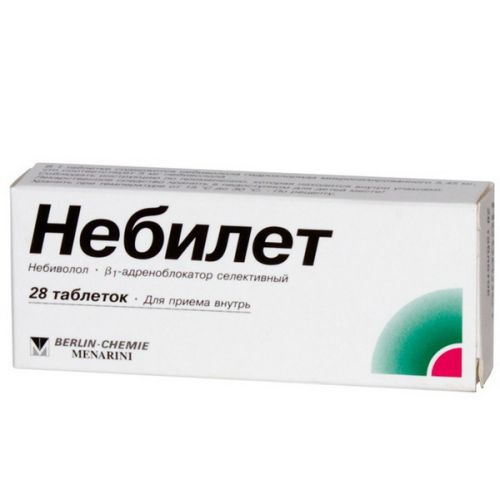
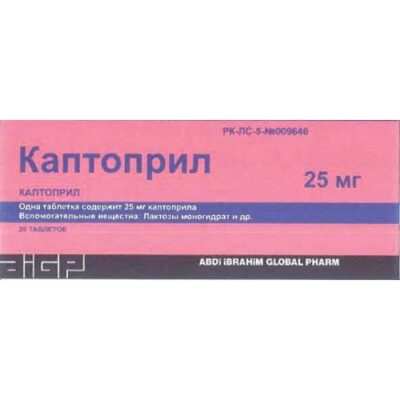
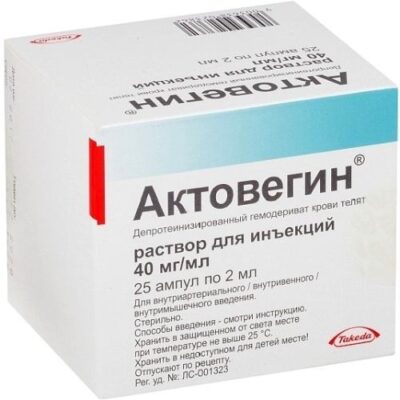
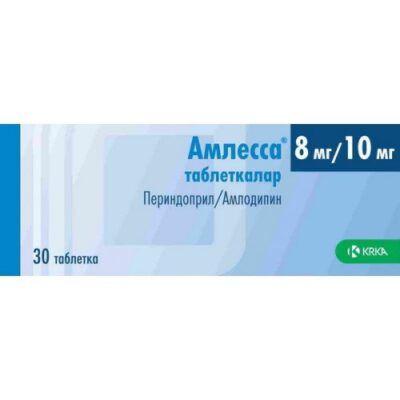
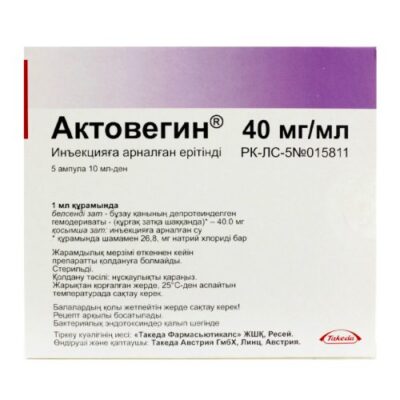
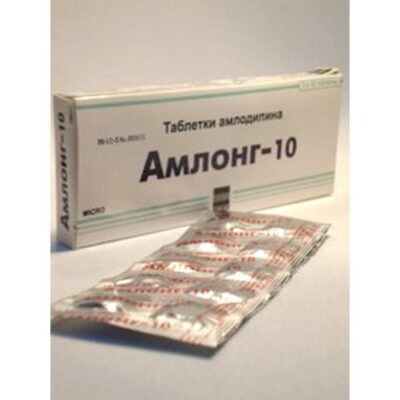
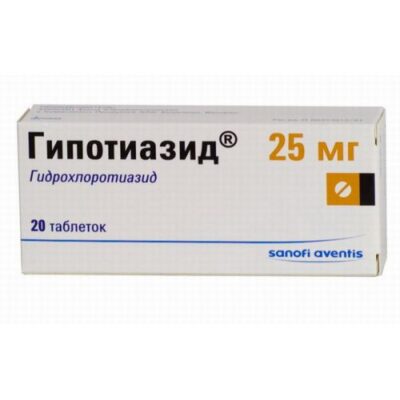
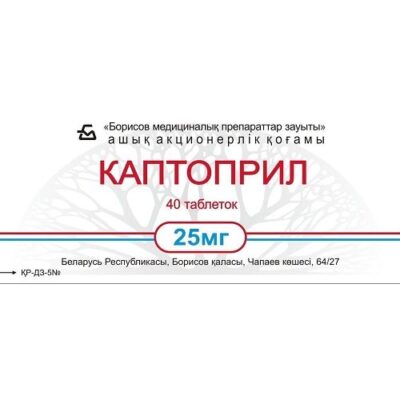
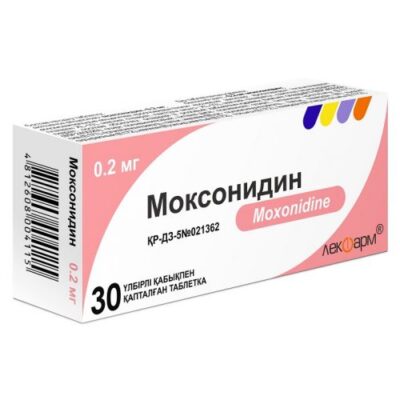
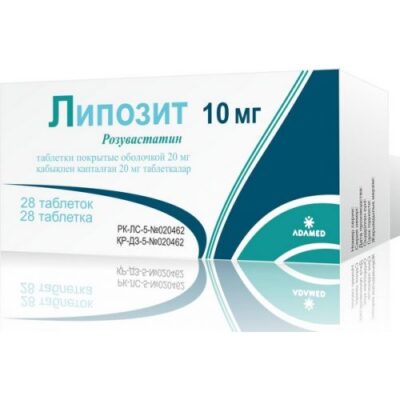
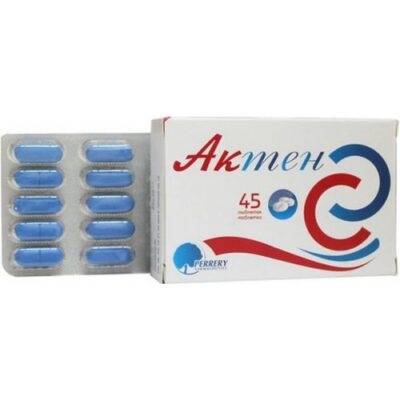






Reviews
There are no reviews yet.